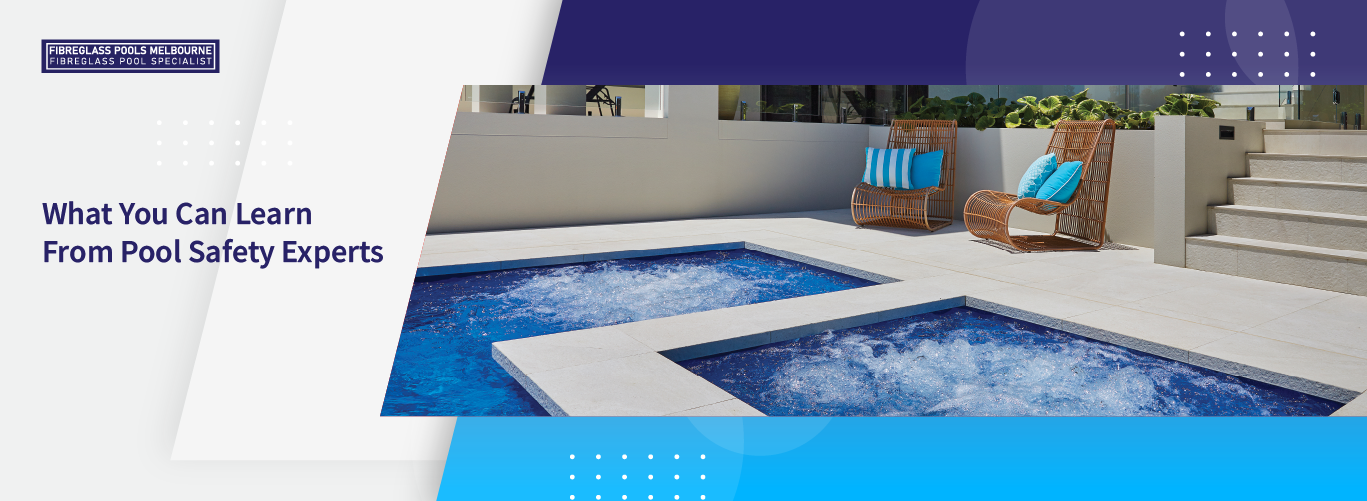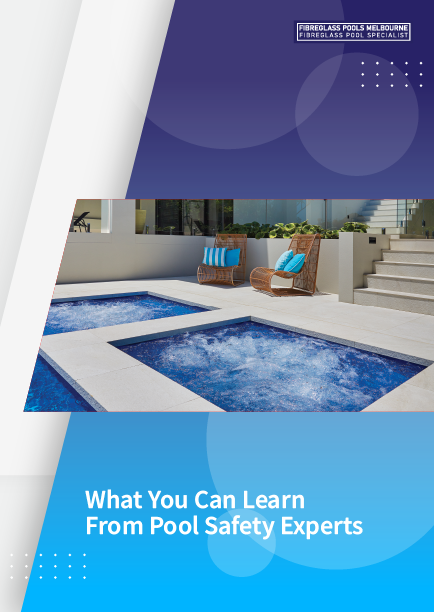What You Can Learn From Pool Safety Experts

Why Pool Safety Matters
Summer days often conjure up images of children gleefully splashing in the pool, parents lounging nearby with a watchful eye. While pools provide endless fun and a means to cool off, they also present significant risks, especially for young children. Drowning is the leading cause of accidental death for children aged 1-4, making pool safety an issue that no parent can afford to overlook. This blog post aims to equip you with crucial insights from pool safety experts, highlighting common mistakes, the latest safety technology, and practical tips for teaching your child how to swim safely. By the end of this article, you’ll be well-versed in creating a safe and enjoyable swimming environment for your family.
What Pool Safety Experts Say
Pool safety is not merely a matter of installing a fence around the pool. It encompasses various precautionary measures, many of which are often overlooked by parents. Experts like Dr. Tom Griffiths, founder of the Aquatic Safety Research Group, stress the importance of multiple layers of protection. These layers include physical barriers, supervision, and water safety education.
Experts also recommend having a well-thought-out emergency plan. This plan should include knowing CPR, having floatation devices readily available, and understanding the steps to take if an accident occurs. According to a study by the American Academy of Pediatrics, proper supervision and multiple safety measures can reduce the risk of drowning by up to 88%.
Moreover, pool safety experts advocate for continuous education. Attending safety workshops, keeping updated on the latest safety guidelines, and engaging in regular discussions about pool safety can significantly enhance your preparedness.
Common Mistakes and How to Avoid Them
Over-reliance on Floatation Devices:
Many parents make the mistake of depending too much on floatation devices like arm floaties and inflatable rings.
While these items can provide a sense of security, they are not foolproof and should never be a substitute for active, vigilant supervision.
Children can easily slip out of these devices or encounter situations where they don’t provide adequate support.

Neglecting Pool Maintenance:
A common oversight is failing to regularly maintain the pool.
Poor maintenance can create numerous hazards, such as slippery surfaces that increase the risk of falls, or malfunctioning drains that pose serious safety threats.
Regular checks include inspecting the pool for broken tiles, ensuring the filtration system is functioning properly, and checking for algae or other harmful microorganisms.
Timely repairs and consistent upkeep are crucial to ensuring a safe swimming environment.
Underestimating the Importance of Swim Lessons:
Many parents delay enrolling their children in swim lessons, often underestimating their importance or thinking the child is too young.
Learning to swim can be life-saving, and it’s recommended to start swim lessons as early as six months old.
The American Red Cross advises adapting swim lessons to fit the child’s developmental stage, which can prevent drowning and instil water safety habits from a young age.
The Latest in Pool Safety Technology
Technology has revolutionised many aspects of our lives, and pool safety is no exception. Modern safety gadgets can significantly mitigate risks, offering parents peace of mind. One such innovation is pool alarms. These devices alert you if someone enters the pool area, providing an additional layer of protection.
Another technological marvel is the automatic pool cover. Controlled by a switch, these covers can quickly seal the pool, preventing unauthorised access. Additionally, smart pool monitors like the SEAL SwimSafe system use AI to track swimmers’ movements, sending alerts if it detects unusual activity.
For those wanting to go a step further, there are wearable devices like the iSwimband. This gadget alerts you if a child has been underwater for too long, helping prevent potential drowning incidents. Investing in these technologies can make your pool area significantly safer.

Teaching Your Child to Swim Safely
Swimming is a vital life skill that every child should learn. However, teaching your child to swim safely is equally important. Start by enrolling them in a certified swim program. These programs are designed to teach essential skills and water safety in a structured environment.
In addition to formal lessons, practice regularly with your child. Make swimming fun but educational by incorporating games that teach floating, treading water, and safe entry and exit techniques. Always emphasise the importance of never swimming alone and staying away from pool drains.
Finally, incorporate safety drills into your routine. Simulate different scenarios, such as what to do if they get tired or if someone needs help. These drills will reinforce their skills and boost their confidence in the water.
The Role of Supervision
No amount of technology or training can replace the importance of adult supervision. The presence of a responsible adult can make all the difference in preventing accidents. One critical aspect of supervision is the concept of “touch supervision,” which means always being within arm’s reach of your child when they’re in the water.
It’s also important to designate a “Water Watcher” during gatherings. This person should have the sole responsibility of watching the pool, eliminating distractions such as mobile phones or conversations. Switching “Water Watcher” duties periodically ensures sustained vigilance.
Finally, never assume that someone else is watching the children. Clear communication among adults about who is responsible for supervision at any given time can prevent tragic misunderstandings.
Prioritise Pool Safety
Pool safety is a multifaceted issue that requires ongoing attention and effort. From understanding expert recommendations to utilising the latest technology, and teaching your child essential swimming skills, each step contributes to a safer swimming environment. The role of supervision can never be overstated, and clear communication among adults is paramount in ensuring safety.
By implementing these strategies, you are not just preventing accidents but also creating a secure and enjoyable space for your family to make lasting memories. Prioritising pool safety is not just a seasonal task; it’s a year-round responsibility that can save lives.
For parents eager to deepen their knowledge, consider attending local safety workshops or enrolling in CPR certification courses. The more you know, the safer your family will be. Take action today to ensure your pool is a haven of fun, not a source of worry.
What You Can Learn From Pool Safety Experts

Why Pool Safety Matters
Summer days often conjure up images of children gleefully splashing in the pool, parents lounging nearby with a watchful eye. While pools provide endless fun and a means to cool off, they also present significant risks, especially for young children. Drowning is the leading cause of accidental death for children aged 1-4, making pool safety an issue that no parent can afford to overlook. This blog post aims to equip you with crucial insights from pool safety experts, highlighting common mistakes, the latest safety technology, and practical tips for teaching your child how to swim safely. By the end of this article, you’ll be well-versed in creating a safe and enjoyable swimming environment for your family.
What Pool Safety Experts Say
Pool safety is not merely a matter of installing a fence around the pool. It encompasses various precautionary measures, many of which are often overlooked by parents. Experts like Dr. Tom Griffiths, founder of the Aquatic Safety Research Group, stress the importance of multiple layers of protection. These layers include physical barriers, supervision, and water safety education.
Experts also recommend having a well-thought-out emergency plan. This plan should include knowing CPR, having floatation devices readily available, and understanding the steps to take if an accident occurs. According to a study by the American Academy of Pediatrics, proper supervision and multiple safety measures can reduce the risk of drowning by up to 88%.
Moreover, pool safety experts advocate for continuous education. Attending safety workshops, keeping updated on the latest safety guidelines, and engaging in regular discussions about pool safety can significantly enhance your preparedness.
Common Mistakes and How to Avoid Them
Over-reliance on Floatation Devices:
Many parents make the mistake of depending too much on floatation devices like arm floaties and inflatable rings.
While these items can provide a sense of security, they are not foolproof and should never be a substitute for active, vigilant supervision.
Children can easily slip out of these devices or encounter situations where they don’t provide adequate support.

Neglecting Pool Maintenance:
A common oversight is failing to regularly maintain the pool.
Poor maintenance can create numerous hazards, such as slippery surfaces that increase the risk of falls, or malfunctioning drains that pose serious safety threats.
Regular checks include inspecting the pool for broken tiles, ensuring the filtration system is functioning properly, and checking for algae or other harmful microorganisms.
Timely repairs and consistent upkeep are crucial to ensuring a safe swimming environment.
Underestimating the Importance of Swim Lessons:
Many parents delay enrolling their children in swim lessons, often underestimating their importance or thinking the child is too young.
Learning to swim can be life-saving, and it’s recommended to start swim lessons as early as six months old.
The American Red Cross advises adapting swim lessons to fit the child’s developmental stage, which can prevent drowning and instil water safety habits from a young age.
The Latest in Pool Safety Technology
Technology has revolutionised many aspects of our lives, and pool safety is no exception. Modern safety gadgets can significantly mitigate risks, offering parents peace of mind. One such innovation is pool alarms. These devices alert you if someone enters the pool area, providing an additional layer of protection.
Another technological marvel is the automatic pool cover. Controlled by a switch, these covers can quickly seal the pool, preventing unauthorised access. Additionally, smart pool monitors like the SEAL SwimSafe system use AI to track swimmers’ movements, sending alerts if it detects unusual activity.
For those wanting to go a step further, there are wearable devices like the iSwimband. This gadget alerts you if a child has been underwater for too long, helping prevent potential drowning incidents. Investing in these technologies can make your pool area significantly safer.

Teaching Your Child to Swim Safely
Swimming is a vital life skill that every child should learn. However, teaching your child to swim safely is equally important. Start by enrolling them in a certified swim program. These programs are designed to teach essential skills and water safety in a structured environment.
In addition to formal lessons, practice regularly with your child. Make swimming fun but educational by incorporating games that teach floating, treading water, and safe entry and exit techniques. Always emphasise the importance of never swimming alone and staying away from pool drains.
Finally, incorporate safety drills into your routine. Simulate different scenarios, such as what to do if they get tired or if someone needs help. These drills will reinforce their skills and boost their confidence in the water.
The Role of Supervision
No amount of technology or training can replace the importance of adult supervision. The presence of a responsible adult can make all the difference in preventing accidents. One critical aspect of supervision is the concept of “touch supervision,” which means always being within arm’s reach of your child when they’re in the water.
It’s also important to designate a “Water Watcher” during gatherings. This person should have the sole responsibility of watching the pool, eliminating distractions such as mobile phones or conversations. Switching “Water Watcher” duties periodically ensures sustained vigilance.
Finally, never assume that someone else is watching the children. Clear communication among adults about who is responsible for supervision at any given time can prevent tragic misunderstandings.
Prioritise Pool Safety
Pool safety is a multifaceted issue that requires ongoing attention and effort. From understanding expert recommendations to utilising the latest technology, and teaching your child essential swimming skills, each step contributes to a safer swimming environment. The role of supervision can never be overstated, and clear communication among adults is paramount in ensuring safety.
By implementing these strategies, you are not just preventing accidents but also creating a secure and enjoyable space for your family to make lasting memories. Prioritising pool safety is not just a seasonal task; it’s a year-round responsibility that can save lives.
For parents eager to deepen their knowledge, consider attending local safety workshops or enrolling in CPR certification courses. The more you know, the safer your family will be. Take action today to ensure your pool is a haven of fun, not a source of worry.


